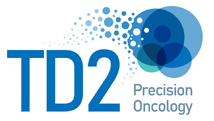Featured Guest Blog: Quality is Critical by Mary E. Lynn

In pharmaceutical drug development, quality is critical. The FDA relies on quality driven documents to make decisions on the safety and effectiveness of regulated products and the approval of those products. While Quality Assurance (QA) is a clear regulatory requirement in some instances (i.e., studies required to be compliant with Good Laboratory Practices), it can also be part of an organization’s quality system in order to provide the quality documents to FDA even if not specifically required by regulation. When thinking about the review of data and reports, a robust quality system typically includes both data quality control reviews and QA audits. Data quality control personnel are typically responsible to verify that documentation is complete and data are being reported accurately. QA provides a second layer of quality review by looking at both the organizational quality aspects and project specific quality which goes further than verifying the accuracy of results. While data quality control plays a valuable role, this function does not typically review project and facility records in the same manner as QA and the QA review provides feedback on the effectiveness of the quality control review.
FDA regulations do not require a QA element for projects such as method validations and clinical trial exploratory assays (e.g., flow cytometry) and some facilities do not include QA on these types of projects. However, even if not required, QA can provide an independent viewpoint of overall project quality which is not typically obtained in another manner. For example, it is typical for QA to verify adherence to standard operating procedures (SOP) and project plans, confirm personnel were adequately trained and equipment was maintained and calibrated as required. QA can also provide an independent review of the quality of project conduct. For example, were there any issues that arose during the project requiring an investigation or further explanation. If so, QA involvement can include reviewing these documents for clarity and completeness and whether the issue is reflected accurately in the report.
QA personnel can also conduct inspections of on-going project conduct. This involves QA observing one or more phases of project conduct to ensure the quality of the phase observed. As an example, for a flow cytometry analysis, during the inspection QA is verifying real time that the project plan and applicable SOPs were followed, sample chain-of-custody is documented and sample integrity is maintained, the data is recorded accurately and consistently, there is documented training for the personnel conducting the work being observed, and maintenance and calibration for equipment such as cytometers, pipettes, centrifuges, etc. has been documented as required.
During the reporting phase of a project, QA will verify that the laboratory report accurately reflects the data. This generally includes a verification of the text and some percentage of raw data and report table entries assuming there is a 100% verification of table entry accuracy such as a data quality control review during the report preparation process.
When outsourcing exploratory sample analysis in support of a clinical trial, the assessment of the contract research organization’s (CRO) quality system should be an integral part of the overall assessment of capabilities. While it is important to understand whether a laboratory can technically conduct the assays and they are scientifically sound, it is also important to understand whether the organization has a quality component built into conducting and reporting their work. Does the facility have the basic building blocks needed for conducting analyses within this industry? Do they have meaningful standard operating procedures? Are education, experience and training of personnel documented? Is equipment maintained and calibrated and are these activities documented? Is software used to acquire and evaluate data validated or are procedural controls in place to ensure data quality and integrity? What is the quality review process of the data and reports? Is there an independent verification of the accuracy and completeness of the data and results provided to the Sponsor? Does the facility have a QA unit? If so, what is the extent of their involvement? As indicated earlier, for GLP studies, there is a clear QA requirement. So, if the project is not required to be GLP compliant, what is QA’s involvement? Is QA viewed by the organization as an integral part of the quality system or is it treated as an obligation? If the organization does not have a QA function, how is quality assured? In organizations with a QA function, the audits by QA provide feedback to facility management about the effectiveness of the organization’s quality system. If there is no QA function, what system is used by management to obtain feedback regarding the quality of their data?

Figure 1 – Illustration of how Quality Assurance can impact all aspects of a contract flow lab from producing quality data and reporting to improving everyday business practices.
Each Sponsor needs to determine the requirements for QA involvement on their projects and ensure the CRO used for outsourced laboratory analyses meets those obligations or the Sponsor needs to understand where gaps may be present in order to assess the risk to the quality of their data. One factor in this assessment could depend upon how the data generated will be used by the Sponsor. For example, while an outsourced flow cytometry assay may be exploratory at the present time, is it possible that the assay will become more critical and will this early data be important to support later work? If it is possible that this assay will become critical in later clinical trials, it may be worthwhile to have QA involvement during the early phases. As noted earlier, QA will provide an independent review of the quality of the data, report and project conducted at the CRO. This QA involvement will help ensure that the data and report can withstand independent review.
When QA is integral to a facility’s quality system, this function can provide value added during non-GLP studies and clinical trial exploratory sample analysis.

